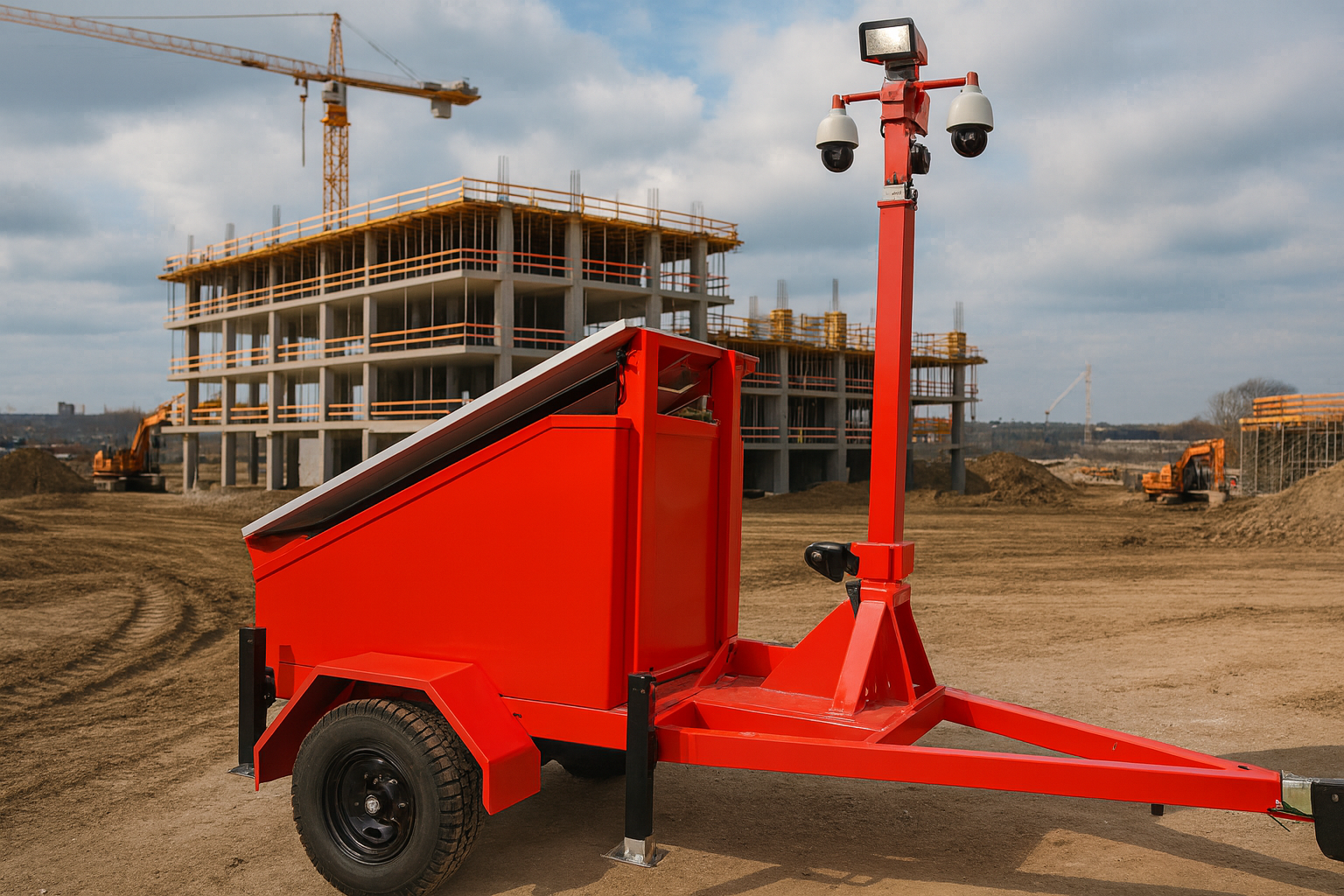TL;DR: Mobile security trailers give construction sites immediate protection long before permanent infrastructure exists. They reduce theft, deter intruders, and maintain visibility across changing jobsite conditions. When the building is ready, they transition smoothly into a permanent, fully integrated security system without leaving gaps in coverage.
How Mobile Security Trailers Bridge the Gap Between Construction and Permanent Security
If you manage construction sites or new facility builds, you already know the problem. You need security before the building exists. Power is inconsistent. Lighting is unreliable. Foot traffic changes every day. Meanwhile, theft, vandalism, and liability risks are at their highest during construction.
But permanent security systems cannot go in until walls, networks, and infrastructure are complete. That gap creates real exposure. Mobile security trailers close it fast.
How Do Mobile Security Trailers Protect a Site Before Permanent Infrastructure Exists?
Mobile security trailers give you a complete camera and monitoring system on day one, without needing building power or internet. They arrive on site as self-contained units with solar, battery, cellular connectivity, high-resolution cameras, and AI analytics.
They solve the core challenges every construction manager faces:
No power needed
No trenching or cabling
Rapid deployment
24/7 remote visibility
Real-time alerts and deterrence
Integration with video monitoring and first response
Hoosier Security equips these trailers with technology from partners like Motorola Solutions, Avigilon, and thermal or PTZ cameras designed for long-distance detection. This gives you early warning and clear evidence if something happens on site.
What Makes Trailers Effective During the Construction Phase?
Construction sites are unpredictable. Layout changes. Material drops shift weekly. Workers come and go. Security needs to adapt quickly. That is where mobile trailers stand out.
They give you:
Flexible placement anywhere on the property
High visibility to deter crime
Built-in speakers for talk-down capabilities
AI analytics to detect people, vehicles, and restricted areas
Cellular connectivity when networks do not exist
Continuous monitoring through Site Watch or Avigilon Alta
Trailers grow with the job. As foundations go in and walls go up, the trailer can be moved to protect the next vulnerable area. You are never stuck with blind spots.
How Do Mobile Trailers Transition Into a Permanent Security System?
A common concern is how to move from temporary protection to a long-term, permanent solution without disruption.
Here is how the transition works:
Site assessment
Hoosier evaluates the final footprint and determines permanent camera, access control, and sensor placement.Phased installation
As the building gains power and network, our team installs the permanent system in stages. Trailers remain active the entire time.Final cutover
Once the permanent system is live, monitoring, analytics, and storage shift over. Trailers are removed only when the new system is fully operational and tested.
This avoids gaps, avoids downtime, and avoids the common scenario where a brand-new building sits unprotected while the integrator waits on power, IT, or construction delays.
Commercial Developers are Detering Suspects with Live Talk Down
A commercial developer in central Indiana was experiencing repeated theft of copper wire, tools, and generators across multiple job sites. Each incident meant insurance claims, delays, and strained relationships with subcontractors.
Hoosier deployed two mobile security trailers with AI analytics, PTZ cameras, and cellular monitoring within 24 hours. Within the first week, remote monitoring identified intruders entering the site after hours. The monitoring team triggered a live talk-down and contacted law enforcement immediately. The suspects fled, nothing was taken, and theft dropped to zero for the remainder of the project.
When the building was ready, Hoosier transitioned the developer to a permanent Avigilon Alta system with full coverage. No security gap. No duplicated effort. No surprise costs.
Frequently Asked Questions
Q: Can mobile security trailers cover large construction areas?
A: Yes. Trailers equipped with thermal cameras, PTZ zoom capability, and wide angle lenses can monitor very large, open sites. Hoosier often uses multiple trailers for expansive developments, and they are designed to work together as part of one monitored ecosystem.
Q: What happens if the site has no power or internet?
A: Trailers operate independently using solar power, extended battery systems, and cellular network connectivity. They do not require the building to be finished or energized.
Q: Can trailers integrate with the permanent security system later?
A: Yes. Hoosier designs temporary and permanent systems as part of one plan. Video, analytics, and monitoring can all be carried over with minimal effort.
Q: Are trailers useful once the building is complete?
A: Absolutely. Many clients redeploy them for future projects, temporary overflow lots, special events, or seasonal operations. They are long-term assets, not disposable equipment.
Q: Will monitored trailers actually stop crime?
A: They provide a powerful deterrent. Live monitoring with talk downs, sirens, and visible lighting stops most intruders before damage occurs. When someone ignores the warnings, the system provides clear evidence and immediate escalation to authorities.
See Our “Trailer Swift” in Action at Our Experience Center
If you want a construction site protected without delays, gaps, or guesswork, schedule a visit to the Hoosier Security Experience Center. You can see mobile security trailers alongside the permanent technologies they transition into. Or contact our team to request a jobsite assessment and deployment plan.









